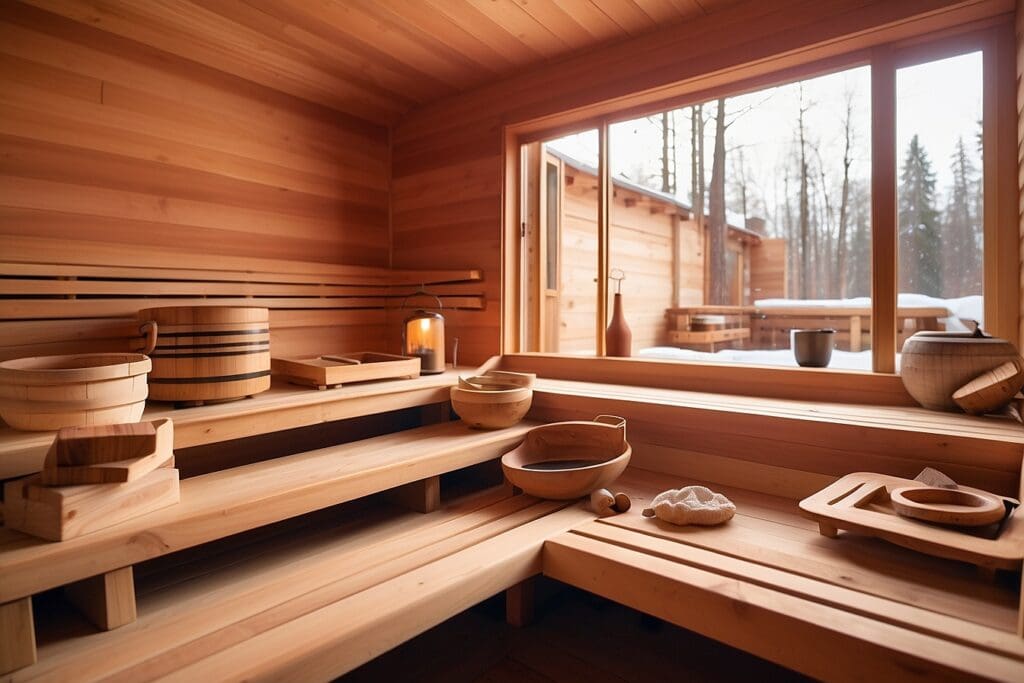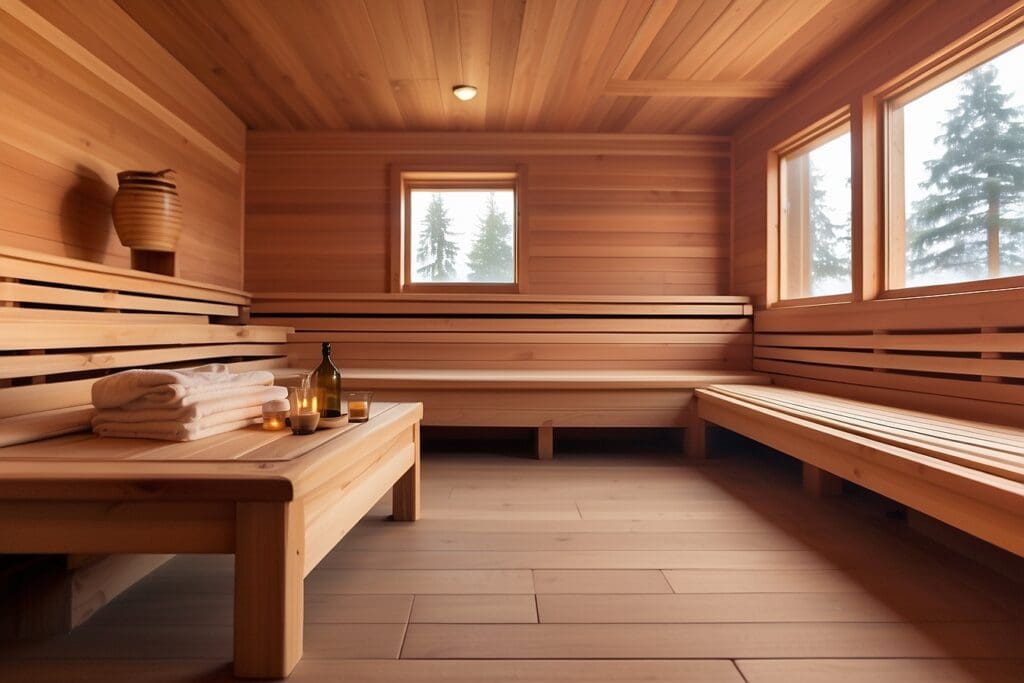Saunas are another long-standing health practice that continues to benefit people today! As Finnish author Maila Talvio said, “There is nothing that Finns have been so unanimous about as their sauna. This unanimity has remained unbroken for centuries and is sure to continue as long as there are children born in their native land.”1 Today, almost every “spa” will offer a sauna, and many gyms will offer them as well!
What is a sauna?

A sauna is usually a small room built of wood with a bench to lie or sit on. In a traditional Finnish sauna, the room is heated by stones placed on a fire, which give off a dry heat. The temperature in the sauna is usually between 160 and 212 degrees Fahrenheit. After the sauna, it is traditional to sit in a cooler room or swim in a cold pool, and then repeat the process again.2 The purpose of a sauna is to raise a person’s internal body temperature so that they sweat.3
History of Saunas
While Finland is infamous for its dry heat saunas, there have been many versions of saunas in different cultures throughout history. Researchers believe that the first saunas emerged during the Stone Age and were holes dug into the ground, with heated rocks placed in the holes and water poured over them.4
One of the earliest forms of the Finnish sauna, which continued into the 20th century, was the smoke sauna. The smoke sauna was a wooden hut with a stove but no chimney; this structure was separate from the main house. This type of sauna takes three or four hours to heat up and one or two hours to settle. During the settling period, the smoke would dissipate and a layer of sterile soot would line the inside of the hut.5 Since the sauna’s heat killed bacteria, making it the most sterile room in the house, many activities occurred in the sauna. Drying flax, curing meat, preparing the deceased for burial, attending to the ill, giving birth, and drawing blood were all activities that commonly occurred in` the sauna.6
During the early 1900s, an alternative to the smoke sauna was created in Finland. This type of sauna had a stove with a chimney, which allowed the heat to be regulated. This sauna only needed one or two hours to heat up and did not need several hours of settling time. In the 1930s, the structure of the sauna evolved again with the stones and the fire being separated by a cast-iron structure. This allowed the fire to remain lit the whole time the sauna is in use. While this means the sauna can begin to be used only 30 minutes after it’s lit, some do not like this version because they believe tending to the fire is disruptive and that the quality of the steam is not as high. As of 2011, there were over two million saunas in Finland, which had a population of five million at the time, and over 99% of Finns took a sauna at least once per week.7
Health Benefits
The benefits from the intense heat of saunas are numerous. First, the heat increases blood flow to the heart, which lowers the heart rate for a given workload and reduces cardiovascular strain. Second, studies have found that intermittent sauna sessions and cooling periods significantly increase natural growth hormone production, which is amazing for muscle growth!8
Saunas also increase blood flow to the muscles, which delivers glucose, fatty acids, and oxygen to the muscles while at the same time removing harmful lactic acid. One study showed that a 30-minute-long sauna session twice per week after workouts increased the time it took for participants to run until exhaustion by 32 percent. In addition to faster muscle recovery, studies have found that saunas contribute to faster muscle growth. Saunas have also been shown to increase insulin sensitivity in obese, diabetic mice.9
Dr. Jari Laukkanen, a cardiologist at the Institute of Public Health and Clinical Nutrition of the University of Eastern Finland, shared:
The act of sitting in a sauna is relaxing by definition as one can not be doing much else while in a sauna, and often they are enjoyed with others – friends or strangers… Sauna bathing is very common habit related to our culture. In Finland saunas are not luxury items, almost everyone has access to a sauna.10
Before taking a sauna bath, eating a heavy meal, drinking alcohol, and exercising are all discouraged. After the sauna, bathers are encouraged to drink a lot of fluids and eat a light meal.11





